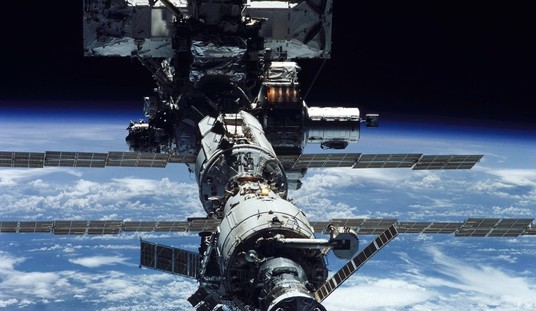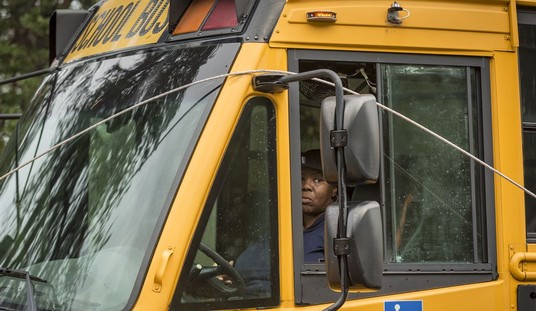Dr. Jonathan Spyer, senior fellow at the Global Research in International Affairs (GLORIA) Center, recently visited Syria and traveled in rebel-held territory. Here are his observations, given in an interview with PJ Media Middle East Editor Barry Rubin.
—————————————————————
— This is your second trip to Syria to observe what’s happening there. How have things changed since your earlier trip?
The first and most immediately noticeable change was that in the northern governates of Aleppo and Idleb, the Assad regime no longer really exists on the ground. In February, making the border crossing from Turkey was potentially quite dangerous because the Syrian regime troops were still patrolling across the border. And the rebels in Idleb travelled only at night, avoiding the main roads and using side roads and smugglers’ tracks to reach the various towns over which they exercised a precarious control.
Today, because of a lack of reliable manpower and rebel harassment, the regime has abandoned these areas and the rebels are in full control on the ground. The Free Syrian Army now operates the border crossing at Bab el Salam in cooperation with the Turks. The FSA operates checkpoints at regular intervals all the way from the border to the entrance to Aleppo city, two hours drive to the south. Only in the city itself is the regime still deployed on the ground. So this is a very notable difference.
One should qualify this picture, however, by noting that the regime still has 100% control of the airspace above these areas and uses this to carry out air raids on both FSA and civilians in this area. The regime army also still holds a number of isolated positions in Aleppo governate, including a military airfield and an officers’ training facility.
— Please describe the situation in Aleppo, Syria’s largest city. How important are the Salafist groups, how well are they organized, and from where are they getting their weapons?
The media has paid great attention to the Salafi jihadi groups fighting in Aleppo city, but in my view they are of only secondary importance both militarily and politically. The most significant of the Salafi-oriented groups is the Ahrar al Sham organization, which is backed by Saudi Arabia. This group is quite visible at significant points in rebel-held parts of the city. They are very visibly Salafi, both in their mode of dress and in the black, white, and green Koranic banners which fly over their positions instead of the Syrian rebel flag. They are thought to receive arms and support from the Saudis. But they are not particularly noted for their military effectiveness.
The other notable Salafi group, Jabhat al-Nusra, is smaller and thought to be linked to al-Qaeda. I did not see members of this group in the city. But I would suspect that a similar combination of extreme zeal and limited effectiveness may well characterize it. In general, the Saudi record suggests that Riyadh is good at creating terror organizations, less good at creating effective military groups. I think this is borne out in the Syrian context.
— And the Muslim Brotherhood groups?
The main group in Aleppo which has been reported as receiving Muslim Brotherhood support is the Tawhid Brigade. This is the largest rebel group in the city. I interviewed one of the commanders of this Brigade and spent some time with a group of its fighters. They are well-armed, well-equipped, and well organized, and were without doubt the most impressive organization I saw in the city from an organizational and military point of view. They also gave the impression of discipline and commitment. The commitment, of course, is to Muslim Brotherhood-style Sunni Islamism.
Reports suggest that this group receives support from the Muslim Brotherhood, Turkey, and Qatar. This would make sense in terms of its outlook. The commander that I spoke to acknowledged this support but said that it consisted of “relief materials only.” He also said that Tawhid’s receiving of support from the “Islamic states” had led to tension between the brigade and the leaders of the Free Syrian Army.
— And the non-Islamists?
Non-Islamist battalions organized loosely under the banner of the Free Syrian Army proliferate in Aleppo, with each battalion having its own name and all belonging to the Aleppo Military Council, which coordinates the military campaign in the city. While all units claim officially that their weaponry is taken from regime soldiers, the uniform appearance of the units suggests that there is external support. From where? From available evidence the most likely source is Turkey, but perhaps also from private Syrian businesspeople living outside of the country. There have also been reports of Western involvement in training of forces in Turkey. It is important to note that the secular Free Syrian Army commanders are many in number and are keen to stress that the rebellion does not consist solely of Islamists.
— So this war should be expected to go on for some time?
I think so, yes. There is currently a stalemate in the civil war in Syria, with neither side able to advance and to deal a decisive blow against the other. The rebellion is well-manned, determined, and organized. But the regime structures also show no signs of collapse. The regime clearly has a shortage of manpower. On the other hand, it retains its artillery and most importantly its aerial capacities. The rebels have no real answer to regime air power, and the regime is currently launching daily airstrikes against rebel-held areas, causing heavy loss of civilian life. The rebels last week launched an offensive in Aleppo designed to drive the regime from the remaining areas it controls (the rebels hold 60-70% of the city on the ground). But the offensive rapidly ran aground, reportedly due to shortages of ammunition, and the stalemate appears not to have been broken.
— And how do you see the future, what would a post-Assad Syria look like?
It is difficult to predict. I think that Assad is determined that there won’t be a post-Assad Syria for quite some time to come, and I think he should be taken seriously in this regard. The rebels are brave and determined, but the regime is benefiting from a staunch international coalition standing behind him — including, most importantly, Iran and Russia.
As a result of Iranian support, Assad is also enjoying the support and cooperation of Hezbollah in Lebanon and the Maliki government in Iraq. This staunch international support is proving invaluable to the dictator, especially when compared with the partial and lukewarm support offered the rebellion by its supposed allies and by the West. Given the stalemate, I think that the most likely prospect ahead for Syria is one of civil war for some considerable time to come. Its eventual outcome cannot be predicted, as it will depend on future decisions, also by external actors, which have not yet been made.
Also read:









Join the conversation as a VIP Member